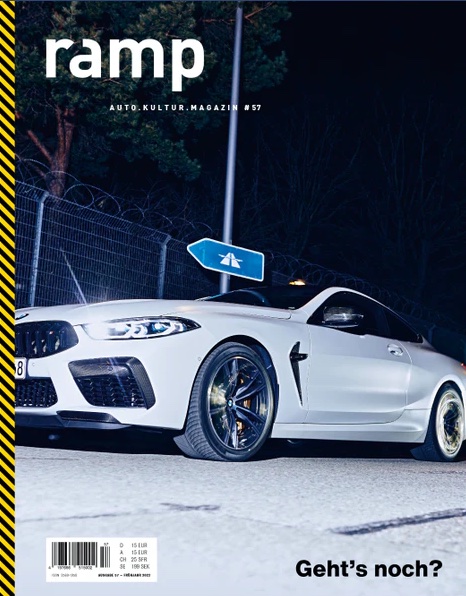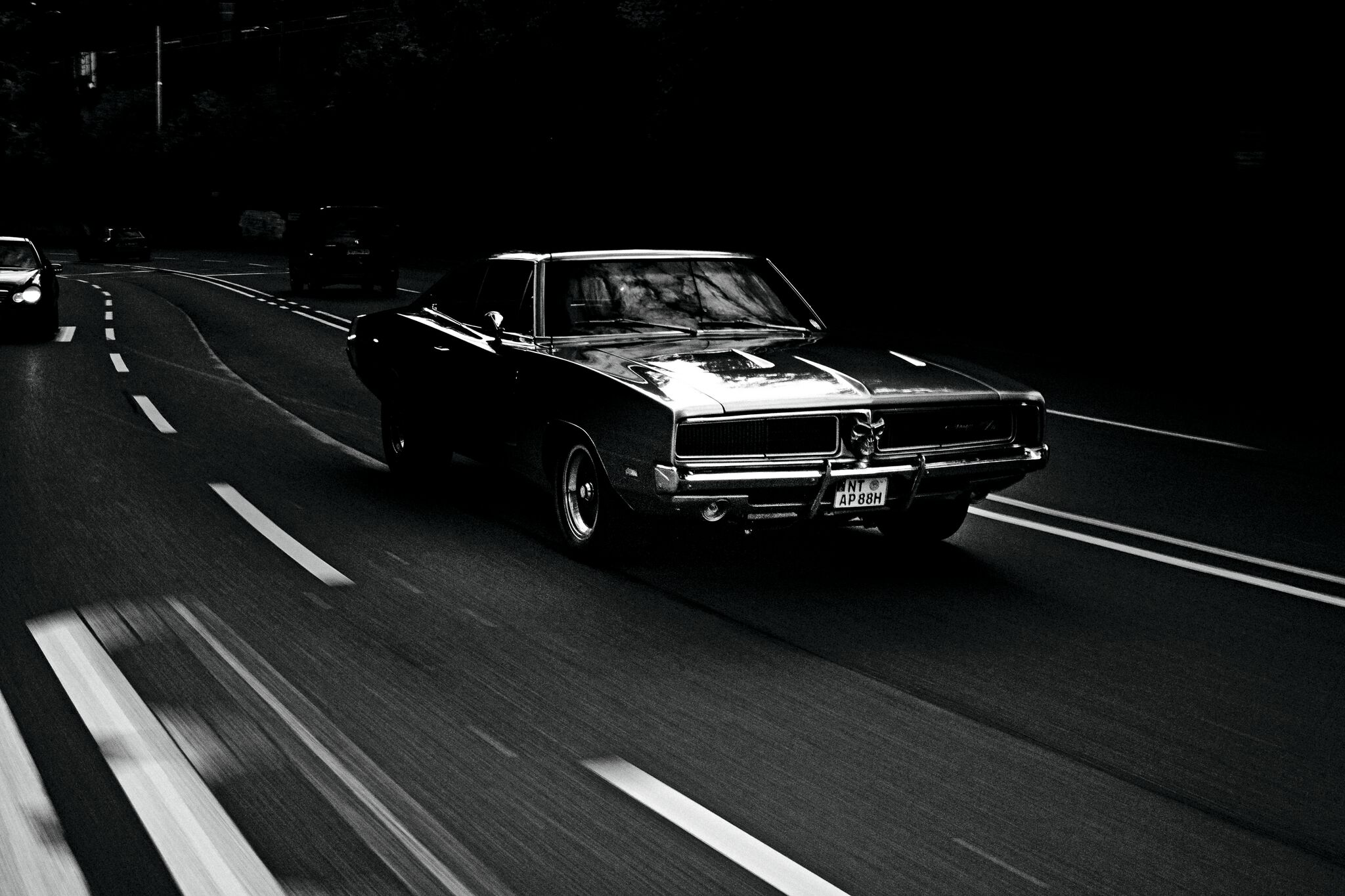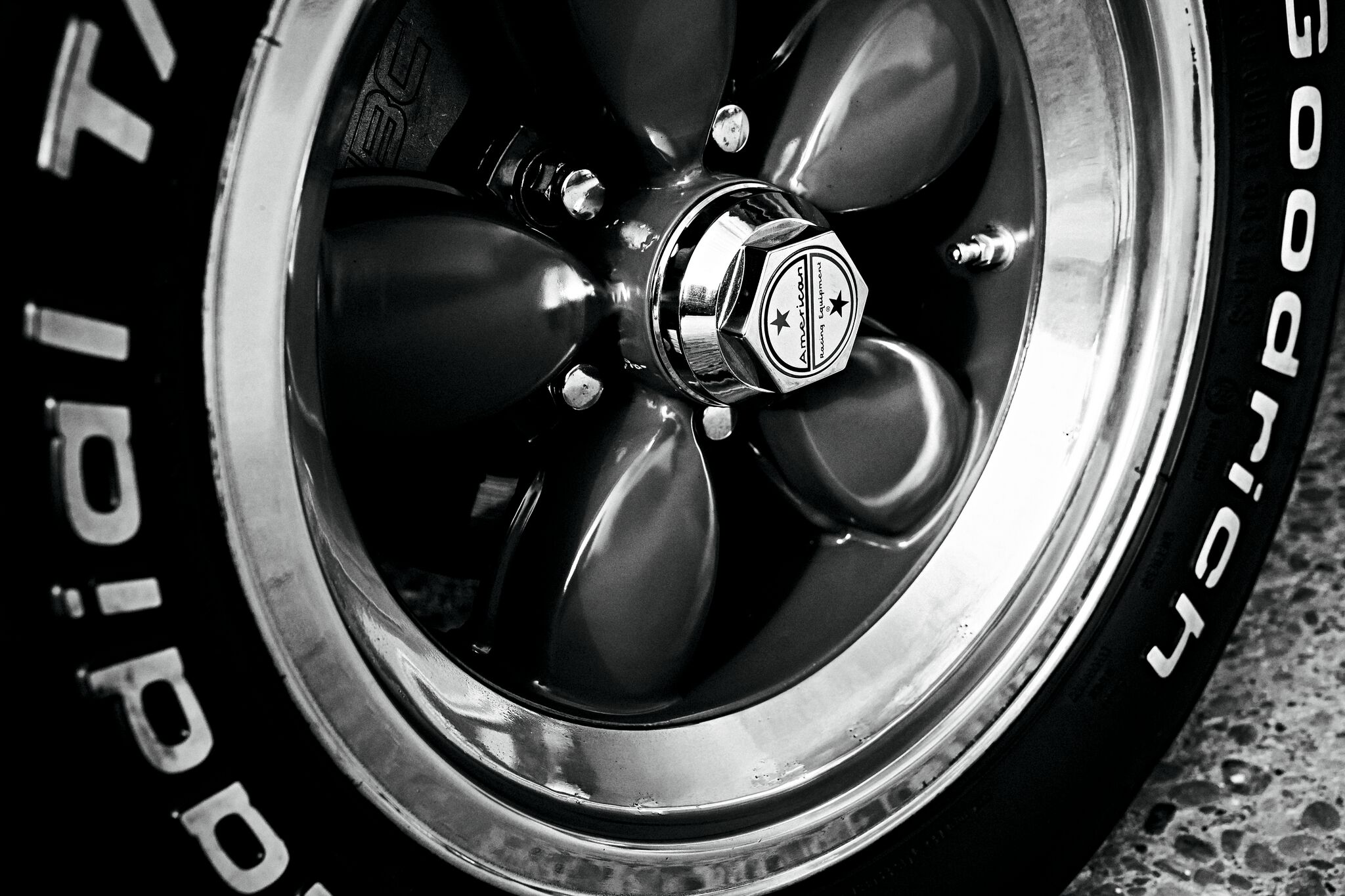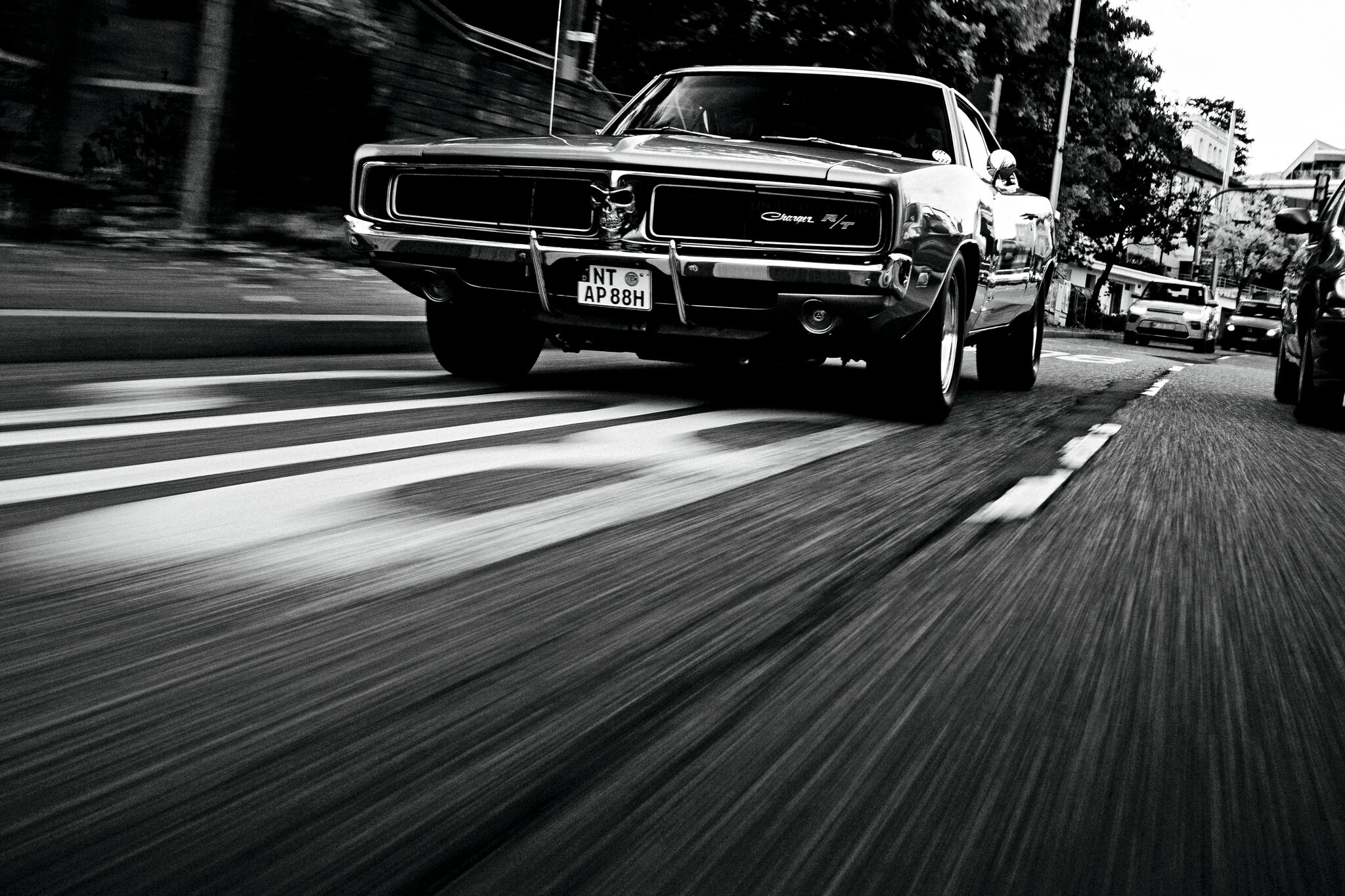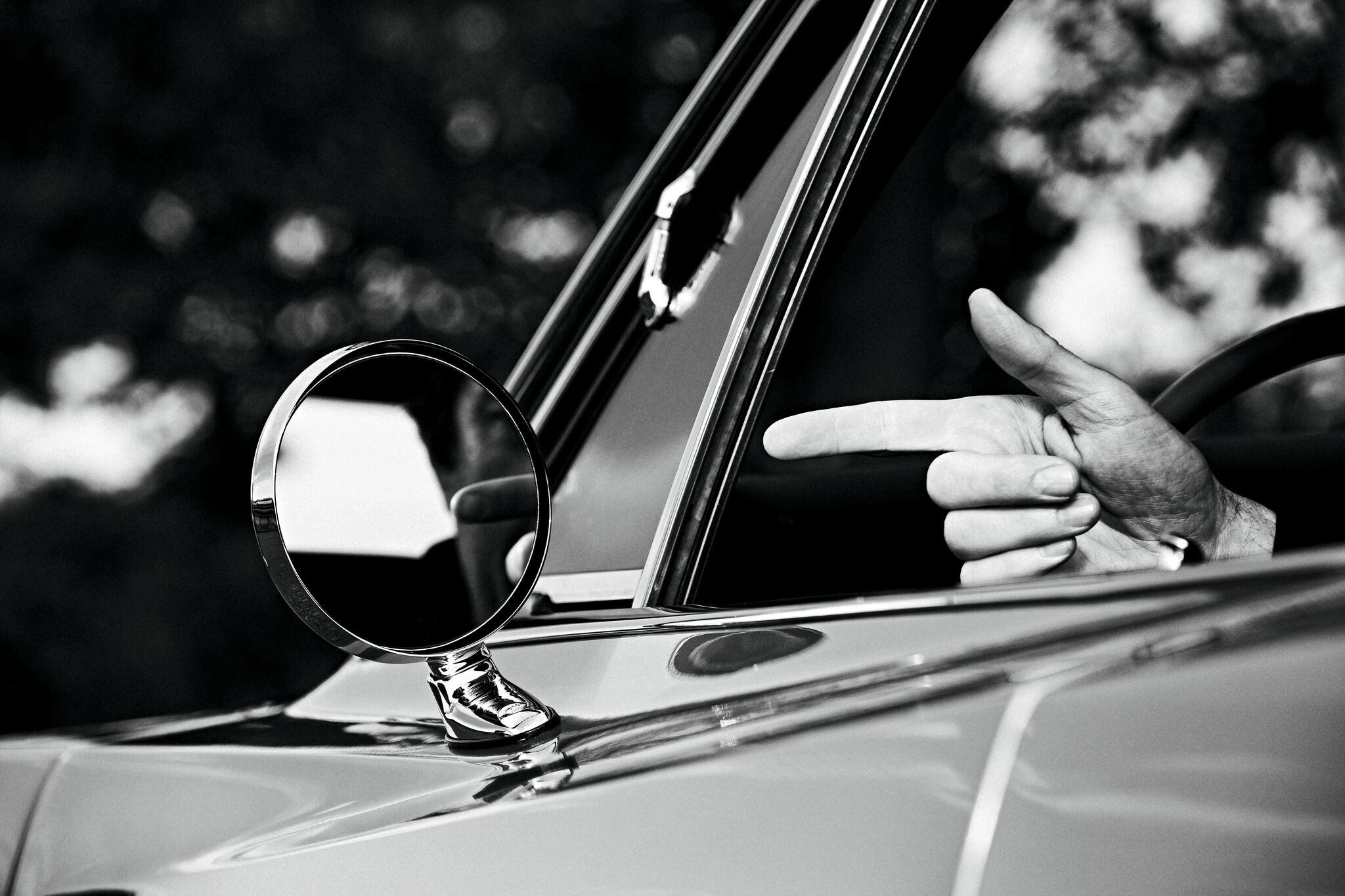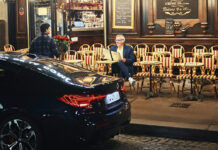First thing after our correspondent got into the ’69 Charger, he rolled down the window. The sun was shining, but that didn’t matter. He would have done it even if it had been freezing outside. Anyone who drives a car like this is immune to the cold.
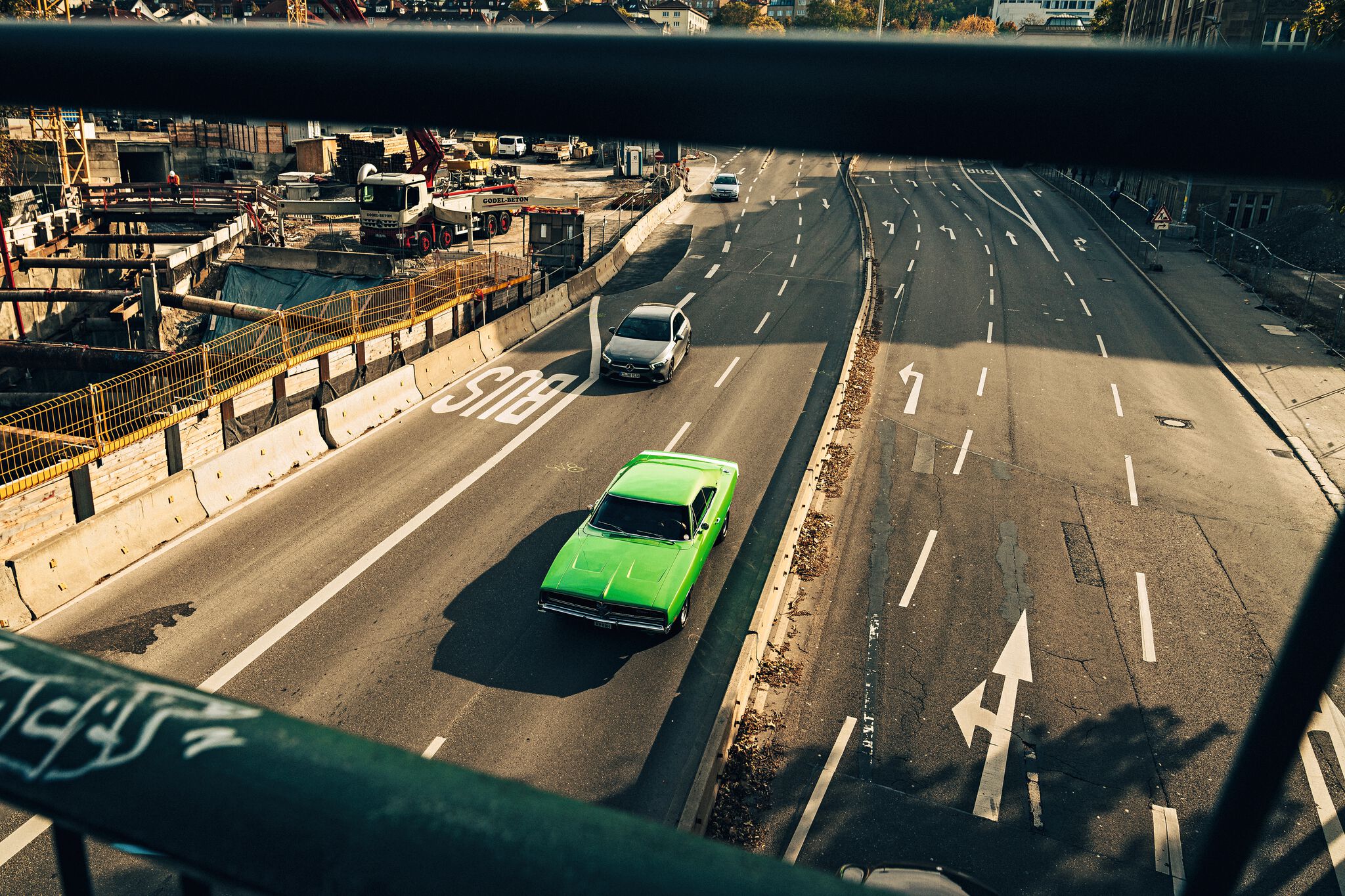
Ever since I’ve been writing for ramp – and rampstyle – -again and driving these insane, super sportscars that have up to 1,000 hp, I’m increasingly losing my connection to and any interest in normal life. I don’t read the newspapers anymore. The Olympic Games in Tokyo passed me by like a thunderstorm whooshing by in the night. In conversation, I often seem absent. At an acquaintance’s housewarming party the other day, a lawyer sporting a blow-dried hairdo and a neck scarf asked me if I’d ever been to St. Bart’s. My response was, “I’ve had such rough elbows lately. I first noticed it at the Ferrari test track in Fiorano. There must be something I can put on them.” Having said this, I didn’t look at him at all. Rather, I directed my gaze downward and took my right elbow in my left hand. The lawyer just said, “Oh, I see,” and told me he had to get some more beer, even though his bottle, which I could clearly see, was still half full.
So, when they asked me to write about a particularly cool car of my choice for this issue, I was extremely grateful. I knew right away that it wouldn’t be a super sportscar. I needed to come back down to earth, so I was going to go a completely different direction this time: It had to be a classic American road cruiser, a Lincoln Continental perhaps, or the Buick Riviera, or the Chrysler Town and Country – blue whales gliding through the teeming flow of traffic, cool in the sense of colossuses confidently doing their own thing, unperturbed by the goings-on on all sides. It’s all just whale fodder.

So, I called the editors to pass on my thoughts. I was put through to the boss, who was heading a meeting on topics and ideas. “I’ll put you on speaker,” he said. I explained my idea, and the boss said, “That’s not a bad idea. And we could take one of Armin’s cars.” After a few seconds of silence, someone else seconded the boss’s inspiration, “Well sure, we’ll take one of Armin’s cars.” They then talked among themselves for a while until the boss turned back to me, “Okay, that’s settled: We’re going to take one of Armin’s cars. I’ll be in touch.” Fine, I said to myself, when the phone call was over, we’ll just take one of Armin’s cars. And let the chips fall where they may.
Who’s Armin?
Armin is in his mid-fifties and is an incurable car fanatic, owner of a breathtaking collection of vehicles who is slowly but surely becoming a fixture at ramp. As you might guess, Armin, who does computer graphics, is well-situated. Eight years ago, he won an Emmy, the most important prize in American television, for the visual effects in the hit series Game of Thrones. Today, he mainly stays busy as an investor.
Armin gave us five US vintage cars to choose from. After much handwringing, I finally decided against a bulky boulevard cruiser, opting instead for AN EXCEPTIONALLY MIND-BENDING CAR! Namely, an apple-green muscle car, a 1969 Dodge Charger R/T with a white Bumblebee stripe on the rear and a silver skull and crossbones on the grille. Hey, 432 horsepower from an era that also produced the Woodstock festival! I’m afraid I can’t help myself. And still, the car is super-cool. If this car isn’t cool, the word has lost all meaning. But its coolness has only evolved with the passage of time. Right out of the gate, this Charger (“charger” is another term for a war horse, by the way) was just an uncompromising creature. Anything this feral and boisterous with the need to sow its wild oats could not be considered cool. Coolness comes with experience and maturity; it remains above the fray, exuding a certain nonchalance, even grandeur, leaving the field to its young, even more tempestuous offspring. True for cars and people alike.
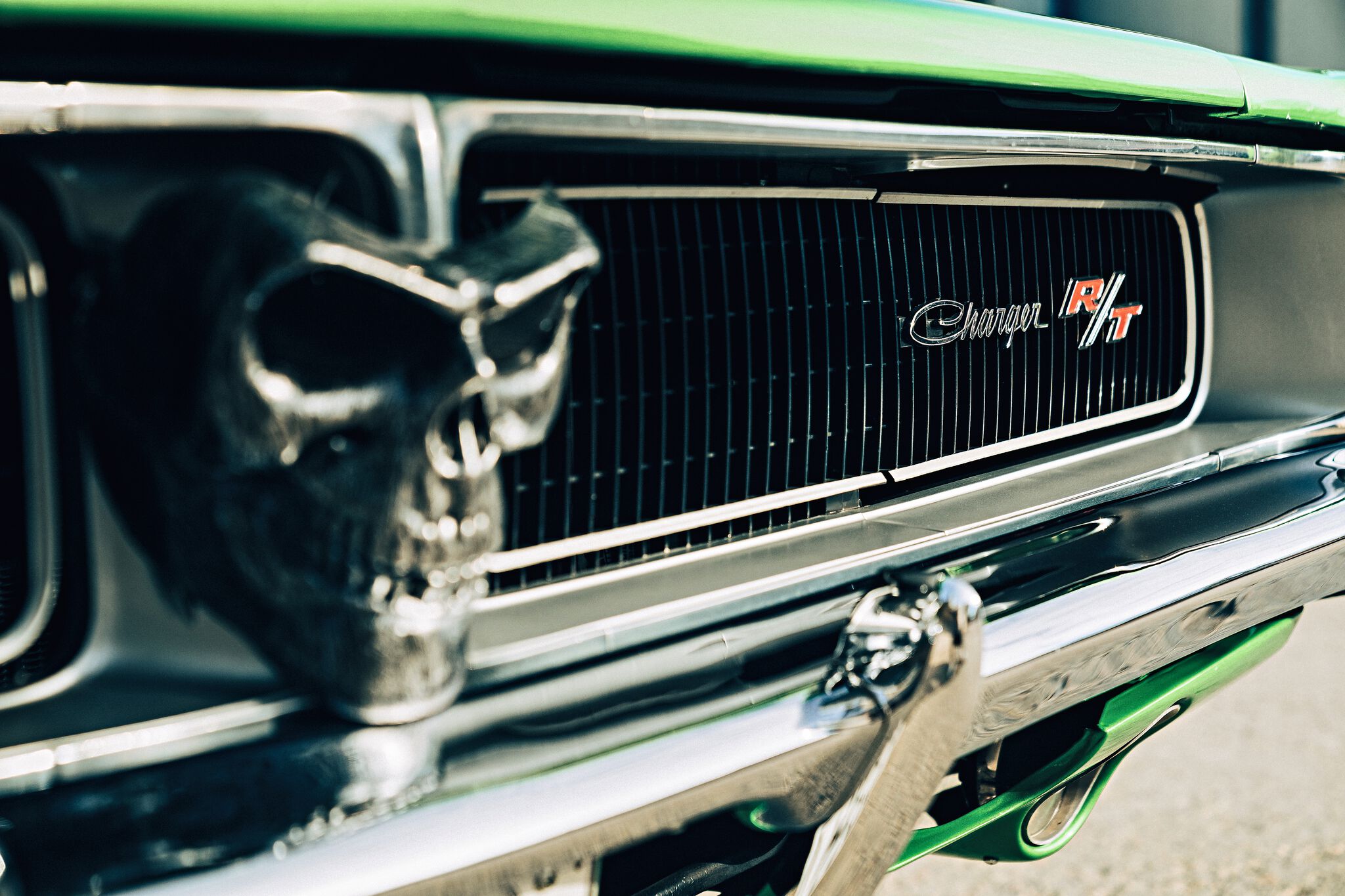
Now let’s indulge in a quick detour across the pond. Until the mid-1960s, rodeo horses and rodeo bulls were the only real homegrown products in the US for guys who wanted something to light a real fire under their ass. But the number of people who wanted to mount an untamed beast that could kill you if it was just crazy enough was vanishingly small. General Motors ended that joyless period, launching the Pontiac GTO in the summer of 1964 and ushering in the era of muscle cars. No need to conjure up anything too elaborate: The two-door Tempest Le Mans mid-range model was simply fitted with a six-liter V8 engine with a twin exhaust bolted on. And the car could cover a quarter of a mile in fifteen seconds! Anyone wanting to properly drive this Pontiac needed nerves of steel and a copious amount of inner Zen. The drum brakes were no walk in the park: You weren’t that far off the mark if you calculated the braking distance in miles. But five pumps on the pedal were enough. At six pumps, you experienced fading at its finest, disappearing into empty space, your only hope being that you were driving across the Great Plains somewhere, where the run-off zones don’t stop until you get to the horizon. The aerodynamics were no slouch either. Uncle Tom’s Cabin would have been hard pressed to do worse in the wind tunnels, and, with its soft suspension, the Pontiac GTO liked cornering as much as a long-tailed cat likes a room full of rocking chairs. Speaking of “GTO”, someone in Maranello forgot to patent those three letters in North America. Need it be mentioned that Enzo Ferrari threw a once-in-a-century tantrum when he learned that those American cowboys had copycatted the Ferrari 250 GTO when naming a $4,000 set of wheels?
Chrysler’s answer to the pumped-up Pontiac came two years later in 1966: the Dodge Charger (the Dodge Brothers Vehicle Company had come under Chrysler ownership some time before that in 1928). The Ford Mustang was out there wreaking havoc, so all hell was breaking loose on the highway. However, because the Charger looked really plain on the outside (the Coronet Fastback Coupe was the base model), it turned out to be a flop. At least the racing version of the Charger won two NASCAR titles.

In 1968 the car was given a new body with angles and edges. Now the Charger finally looked like a real muscle car, a real bully on wheels. The wide radiator front with the folding headlights looked like an oversized electric razor. The curves on the backend provided an absolutely necessary dynamic element. A star was born. Impressive sales figures bolstered the car’s path to movie stardom. In the “mother of all car chases” (with Steve McQueen as Lieutenant Frank Bullitt driving the Mustang, what else?) the bad guys shot their pump shotgun from a black Dodge Charger, before crashing into a gas station and going up in flames.
Then came 1969: Woodstock and the moon landing generated enough hype that year anyway. Besides, the ’68 Charger was still a big seller. If it ain’t broke, don’t fix it, as they say. Updates were limited to minor changes in appearance, like replacing the four round taillights with two big square ones. So, the ’69 is basically a ’68, just like wiener sausages are basically frankfurters (because wiener sausages are a variation of the frankfurter, which are a bit softer and juicier. So, that’s one argument settled).

Back to Armin’s car, which was, as I said, an R/T (“road and track”) version of the ’69, which in straight talk means that the car has disc brakes and a firmer chassis, as well as a 7.2-liter V8 beast lurking under the hood. Armin acquired the 1.6 ton, fully restored car in top condition from a German owner three years ago for €66,000. It is suspected that the speedometer was set to zero when the car was fully restored, which took place about eight years ago, as today the car claims to have traveled just under 15,000 kilometers. The Dodge had to suffer two separate genetic interventions immediately following Armin’s purchase – of course, all for its own good. It was outfitted with a larger oil pan (the huge engine originally had only 3.5 liters of lubrication in the system, compared to nine now) and an electric brake vacuum pump to force the brake booster to generate more reliable brake pressure. The six-barrel carburetor (“six-pack”), which was actually not available until 1970, had already been installed prior Armin’s purchase. As for the silver skull and crossbones on the radiator grille – he added that later.
I caught up with Armin in an industrial park near Stuttgart. He looked as cool as his Dodge, sporting his “MOPAR” cap – the acronym stands for Chrysler’s former tuning department – and a heavy metal T-shirt under his black leather jacket. The Dodge was already standing at the ready, staring me down with its open headlights, cunning and sly, duplicitously playing the innocent, pretending to me that under the hood was really a heart of gold. But I could glimpse the dark recesses of its true nature not only by the skull and crossbones, but also by the 275 tires, whose white “BF Goodrich” lettering looked like war paint.
The best thing to do is not to hesitate, to take the deceiver by surprise. Open door, get in, close door, done. And then – what a contradiction – a huge bus-sized steering wheel covered in beige plastic! It had, however, a grotesquely delicate aura about it and in your hands feels like a hula-hoop for kindergarteners. This enormous steering wheel goes perfectly with the elongated, bus-sized accelerator pedal protruding from the floor at an acute angle which is big enough to fit your whole foot. And the center console made of cheap imitation wood – reminiscent of the laminate flooring typically found in East German prefab apartment blocks – with a gear lever for the three-speed automatic jutting out like the bent stem of a Dutch tulip! “Kurti,” I though, “I don’t think we’re in Kansas anymore!” But the black leatherette seat hugged my backside quite nicely, so when I strapped on my lap belt I just wondered, without any irony, when the last time was that such an intense concentration of bad taste had given me so much pleasure. This is known as the paradox of ugliness, which even has an entry in the German Wikipedia: “It is the phenomenon whereby objects and works of art that, according to normal aesthetic standards, should be considered unattractive or ugly, can actually have aesthetic appeal.”
For the time being, however, your trusty correspondent only rode along as a passenger and docile observer, leaving the driver’s seat to the owner to impart his wisdom about the whims of the old Michigander on the drive to downtown Stuttgart. Just starting the car was a performance unto itself: The whole car started shaking like a malaria patient wracked with fever sweats. Your correspondent’s mouth was already watering, so keen was he on that quarter mile ride and nothing else. The Dodge was now idling, the juddering over for now. But during the overture the engine’s sonic power made itself felt as a penetrating hum piercing my entire body, quickly turning uncomfortable, making my head feel like it was slowly expanding. After being subjected to two hours of this motor idling, even the innocent would willingly offer up a murder confession.
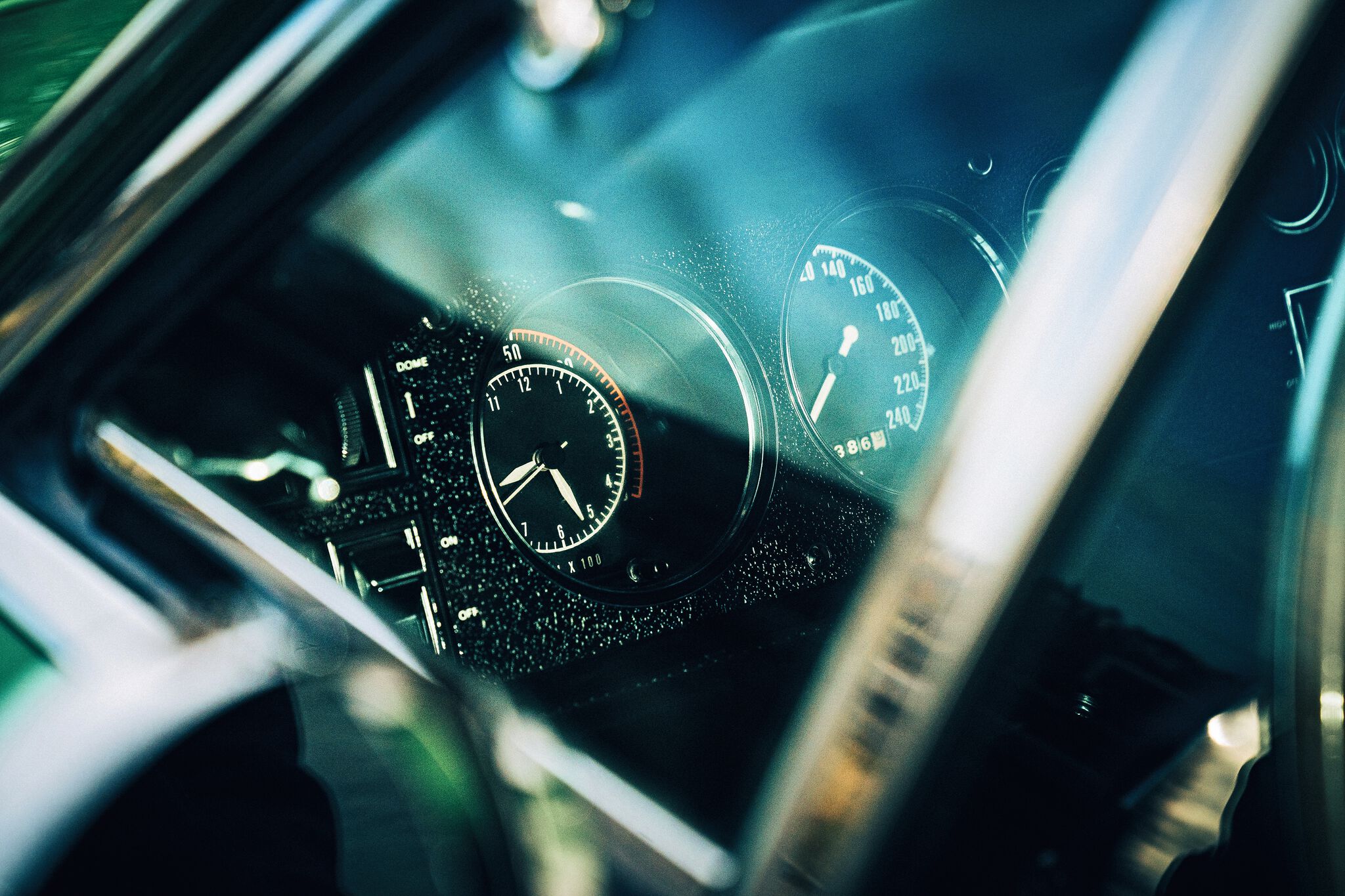
Getting going was much more pleasant, as the Dodge gurgled so nicely. But Armin is the kind who shoots first and asks questions later. He didn’t like the gurgling; he preferred it when it growled. Halting again at the garage exit, he kept the shift lever on “D”, left foot on the brake, pedal to the metal on the gas. Foot off the brake and off we went! It squealed and smoked, and we laughed goofily. Then we were on the highway and my driver started chatting: “This is less like driving than like boating on the Mississippi, mostly because of the soft-as-butter steering, no matter the firmer suspension. It’s like you don’t even feel the road. That can be a problem around corners. It’s best to estimate the radius fairly accurately beforehand, then set course and plow through without correcting. Not even driving straight ahead is as easy as you think. You have to correct constantly, like you’re in a strong crosswind.”
“How does the six-barrel carb feel?” I asked.
“In the lower rev range, it’s the same as the classic twin carburetor. You can’t pump any more gas through the engine anyway. At higher revs, however, you can inject more fuel. Then the additional four carburetors have to be activated by vacuum pressure. Negative pressure from the system is required to switch the mechanism on, so that it briefly cuts out at first when you step hard on the gas. The car fights you a bit when you floor it before it suddenly leaps forward as if completely unhinged. You have to be prepared, because the steering makes it hard to keep control of what’s happening. And as a general rule, I wouldn’t advise stepping on the gas around a bend. That’s guaranteed to make the accident reports on the local news.”
“Fuel consumption?”
“I have never gotten an accurate measurement, but off the charts, for sure. For all numbers fetishists, not more than nine miles per gallon.”
“Zero to a hundred?”
“I don’t know. I just know it’s a blast. Under five seconds, anyway. The car does, after all, have a rear axle with a ratio so short it’s ridiculous. Perfect for quarter-mile races and the traffic-light starts typical of the 1960s. As a touring car, however, the Charger is a fish out of water with nonsensically high revs at higher speeds and makes an ungodly racket. I don’t even know exactly how high it goes. Maybe around 200 km/h?”

We glided across the Mississippi like two boatmen in search of Tom Sawyer and Huckleberry Finn. The helmsman kept propelling us along. The growling soon became a loud banging. Our boat was pitched up and down and constantly leaning to the side as well. Landlubber that I am, I was unprepared for the bobbing. When we reached the river delta just ahead of Stuttgart, I was seasick. Armin parked near the main train station. He had an appointment there and left me in charge of the car. For a whole afternoon. I was supposed to pick him up again in a few hours.
The first thing I did was flip that silver switch on the dash to close the headlights. It made the Dodge look a lot meaner. And because it was mild and sunny, I rolled down the window. I would have rolled it down even if it was minus twenty degrees outside. Anyone driving a ’69 Charger doesn’t feel the cold. The radio was on the fritz, but that didn’t matter. I wouldn’t have listened to the local station anyway. They play what passed for cool music in the 1950s, maybe. Not in any Dodge Charger I’m driving. I’d rather eat rats.
I drove off and immediately made a U-turn. The steering – indeed, how had Armin put it? As pliable as rubber – -had all the precision of the compass needle that sent my former classmate Leopold Ganglmeier wandering in circles in the highlands of Tibet for three weeks before the ragged and half-starved man (who later said he – a vegetarian no less! – had strangled a goat with his bare hands out of desperation) was found by Buddhist monks who took him to their monastery and washed and fed him and kept him with them until he became one of them. (Bild Zeitung, my employer at the time, offered him 250,000 German marks for his story – “THE GOAT STRANGLER FROM VIENNA – NOW A TIBETAN MONK!” – but he told me, after I got on a plane and finally tracked him down after two months, that money was something you couldn’t eat, and he knew what he was talking about.) Where were we? Yes, steering: Well, my original plan was to take this U-turn all easy, but I must have turned the steering wheel ten or fifteen inches to the left, and the Dodge was still going straight. There was no sense at all that the steering could be even remotely connected to anything with wheels. It really was like being on water.

I then took a few laps around the city. How would people react to a gas-guzzling behemoth with a skull on the front? Will I become the new target for some environmentalists? Will they hate me and pelt me with rocks? We live in an era when a German politician had to apologize for wanting to be an Indian chief when she was a kid. I stopped in front of a store that served coffee to go. When I came back outside with my coffee, I saw to my horror that I was parked in a handicapped spot. It was like a giant middle finger to the world. But it was simply an oversight on my part. Three people were standing around the Dodge: An elderly lady with a shopping bag and a middle-aged couple. They’re going to give me what for now, I thought. But the older lady said, “Such a nice car. I’d trade in my Mercedes for it.” The couple took a step towards me, and the man asked a little sheepishly, “What is the fuel consumption per hundred kilometers?” – “A hundred liters.” He didn’t know what to say to that. But he had a follow-up question at the ready, “And what does it top out at?” – “390.”
At a stoplight to my left was some baby-faced guy in a white Japanese midsize rust bucket. Totally psyched, he rolled down the window, calling out: “Awesome wheels!” I gave him a thumbs up: “Thanx.” All of a sudden, he got cocky, “I bet you can’t do a burnout!” – “Come again?” – “I said, I bet you can’t do a burnout!” – “Watch this, you insect. What you’re about to experience is going to give you nightmares and make you wet the bed for years to come.” And then I did what Armin had done. I slammed on the brakes, all while violently abusing the gas pedal at the same time. Downtown Stuttgart finally came alive again. The pipsqueak next to me was hyperventilating. He tried to scream over the overpowering roar of the engine. No dice. But I could read the words on his lips, “Holy crap, man! How cool is that!!! Shit, man!!! Sh . . .” But as soon as the light turned green, I released the brake and vanished into a white cloud of triumph. Afterwards, I wondered whether burnouts were actually allowed in the city. Maybe if you don’t go faster than 50 km/h?
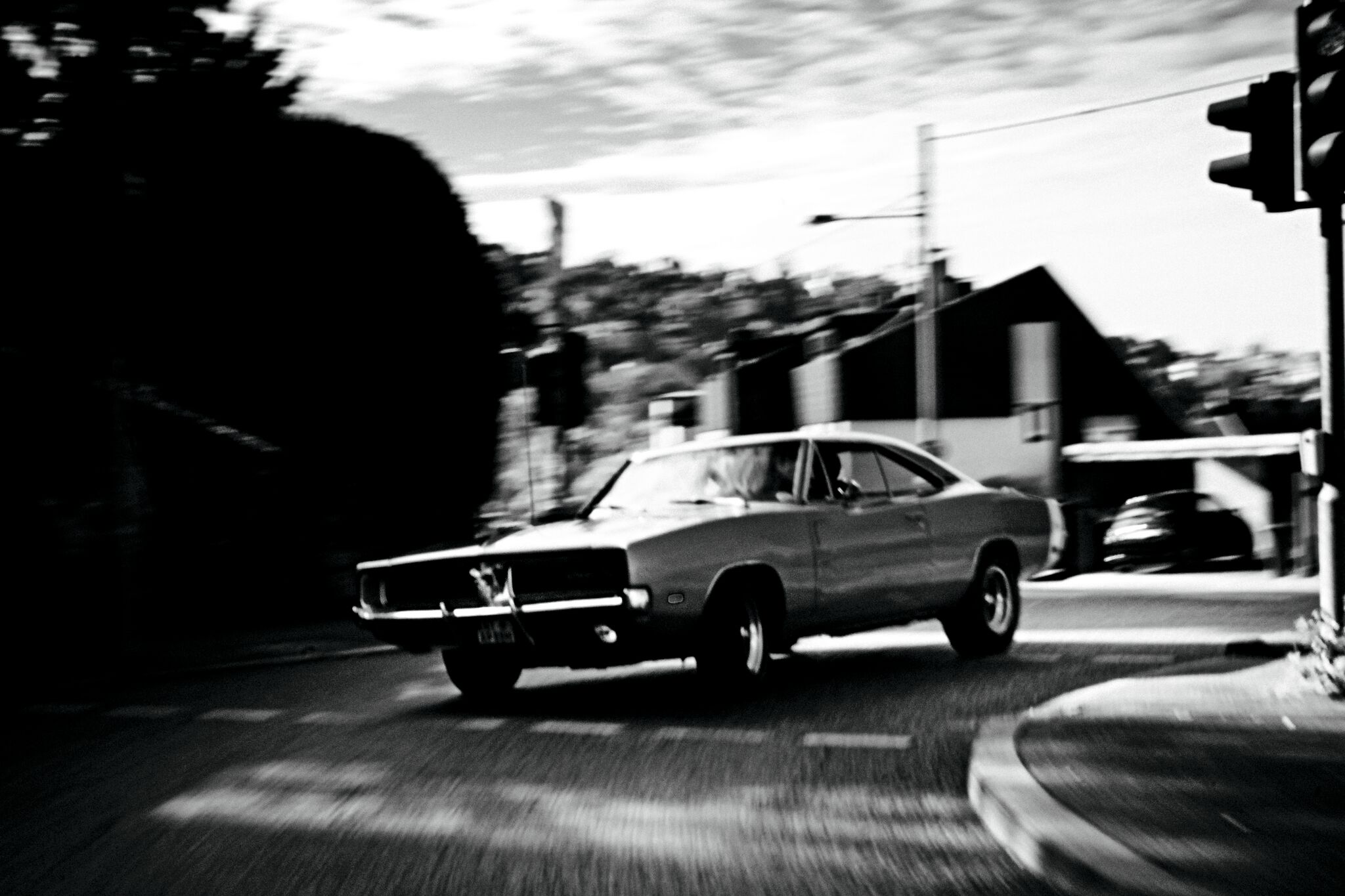
They really liked the Dodge Charger around town, which surprised me greatly. I was heading for the highway now, thinking about just how much I’d like to get a quarter mile under my wheels. That would have required a poker-straight section of asphalt at least 402.34 meters long and flat, with no speed limit. You can only get that at the airport or on the highway. Both were out of the question. Even on the highway, I couldn’t very well do a standing start. So normal highway driving. But what’s normal in this muscle car? I pushed the bus pedal all the way to the floor, no holds barred, and that’s when the “six-pack” finally showed up to play for keeps. The result: a volcanic discharge of forces immediately followed by Newton’s Third Law that for every action, there is an equal and opposite reaction. On the one hand the angry forward acceleration. On the other hand, a pulling and tugging directed backwards and also sideways. Like a pack of wolves wrestling over a piece of meat. You just want to thunder along fast and furious, leaving a huge ruckus in your wake. But this rocking ship of a chassis forces you to constantly make adjustments to the wheel, even while headed dead ahead. In any normal car, you’d have flipped over by now. Friends, seeing is believing!
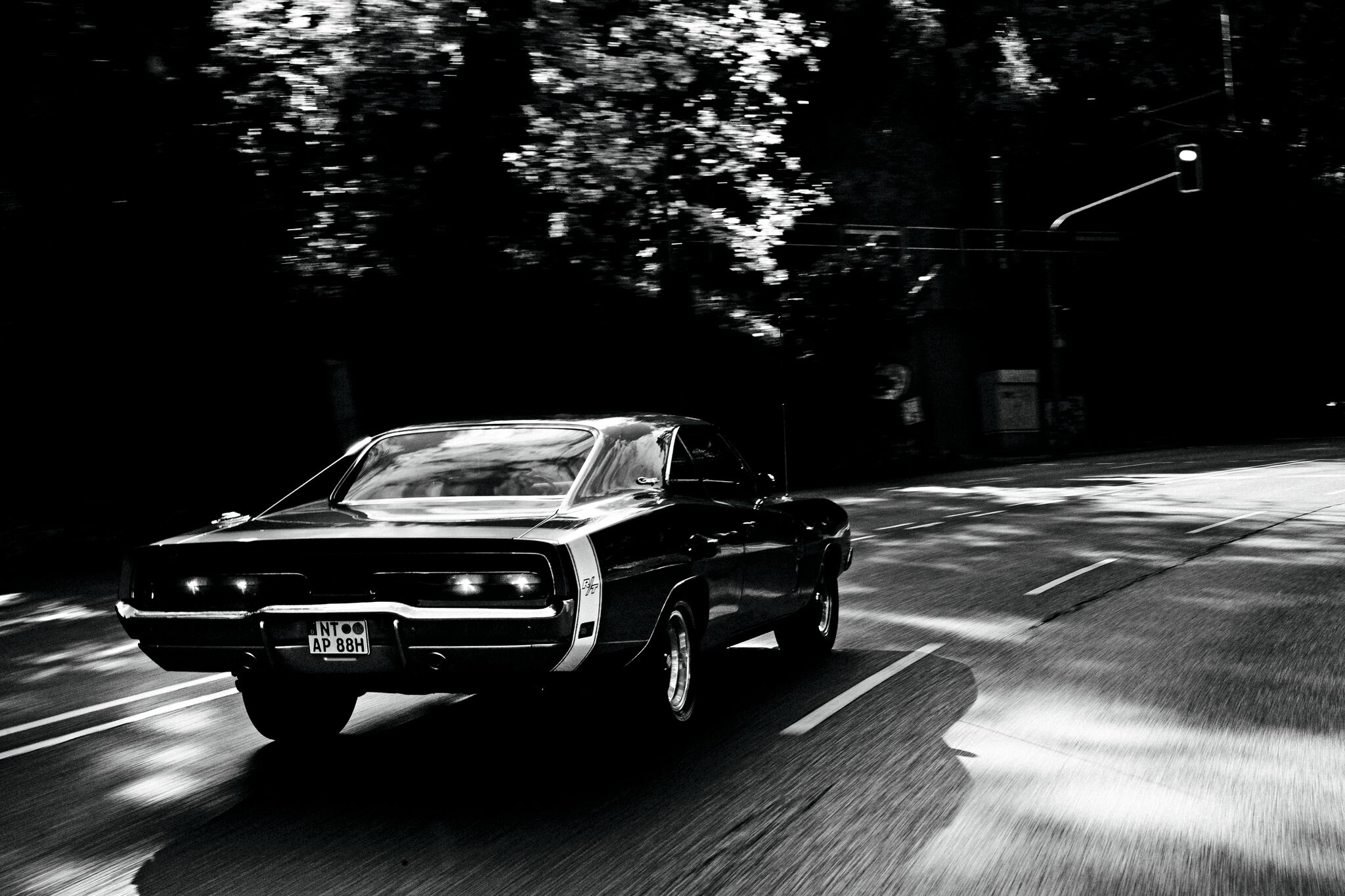
Any now to slowly bring this piece home: I couldn’t stop thinking about two things Armin had said. How did he put it: “And as a matter of principle, I would advise against flooring it around a bend. Otherwise, you’re guaranteed to make the accident report on the local news.” But honestly, isn’t that the whole point of racing? Not to mention the thrill of the taboo! I found a quiet country road, treeless, with clear bends flanked by fields. No other vehicles far and wide. I went full speed around a left-hand bend. Almost simultaneously, I had to countersteer, because I could guess what was going to happen next. And it did. The rear end of the car was about to let loose, full force. Stay cool. Don’t wrench the steering wheel around. Keep the gas steady, otherwise it might start to swing out. I caught it. But it was a shambles from start to finish, my pathetic, failed attempt at a well-controlled drift. At least I didn’t end up off in the field somewhere. And this is when it dawned on me why muscle cars didn’t last long. The high number of fatal accidents had sent insurance premiums skyrocketing.
I drove to Stuttgart to pick up Armin. “Well?” – “I’m still alive.”
ramp #57 – Really?
In this issue of our magazine we are simply engaging in a stimulating conversation. We ask the question “Really?” and allow it to unfold in a playful range between indignant outrage and thoughtful reflection. Because not only is everything connected, it also is the relationships between things that make them what they are. Or something like that.
Text by Kurt Molzer for ramp
Photos by Matthias Mederer, Marko Knab · ramp.pictures

